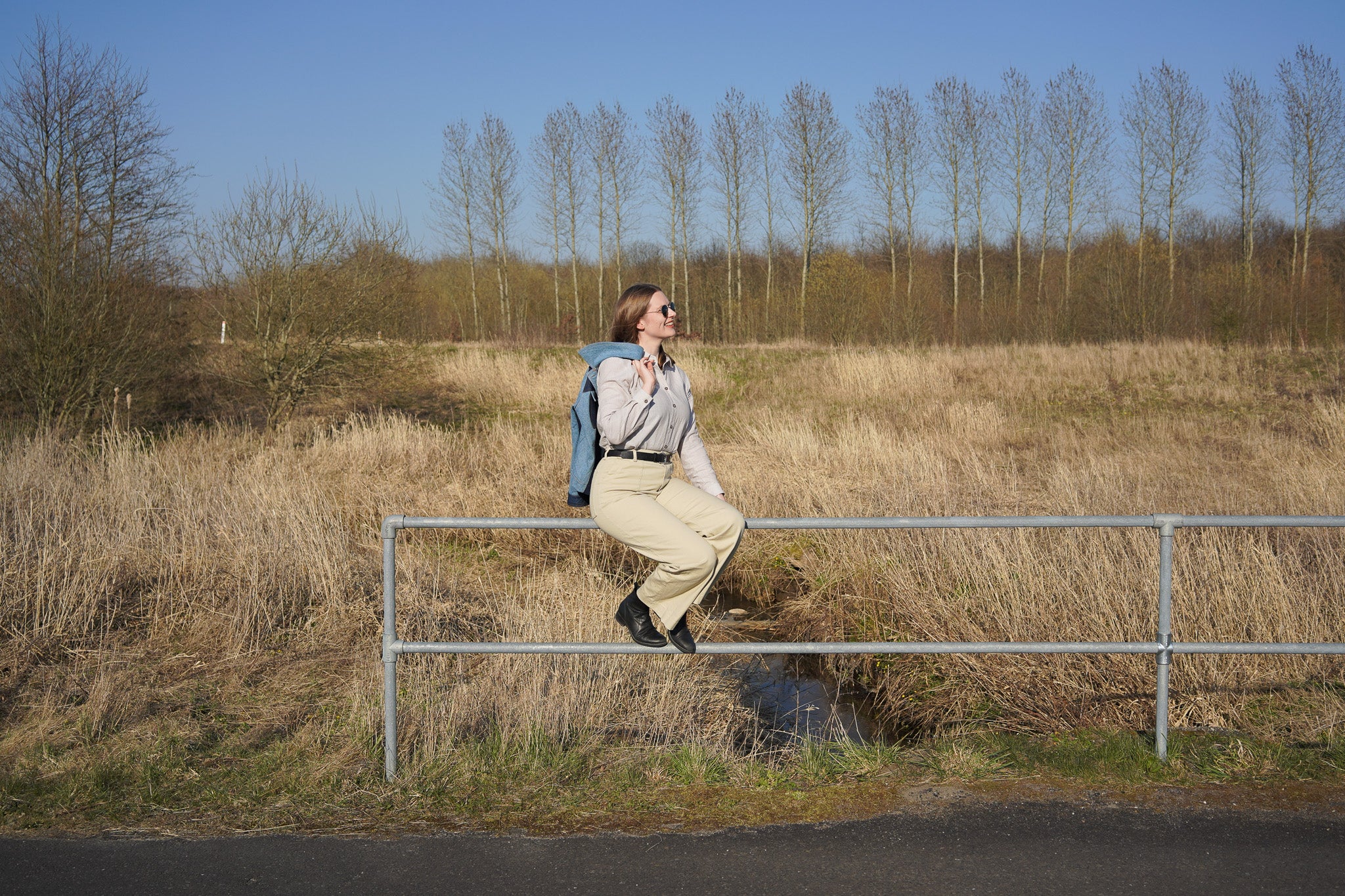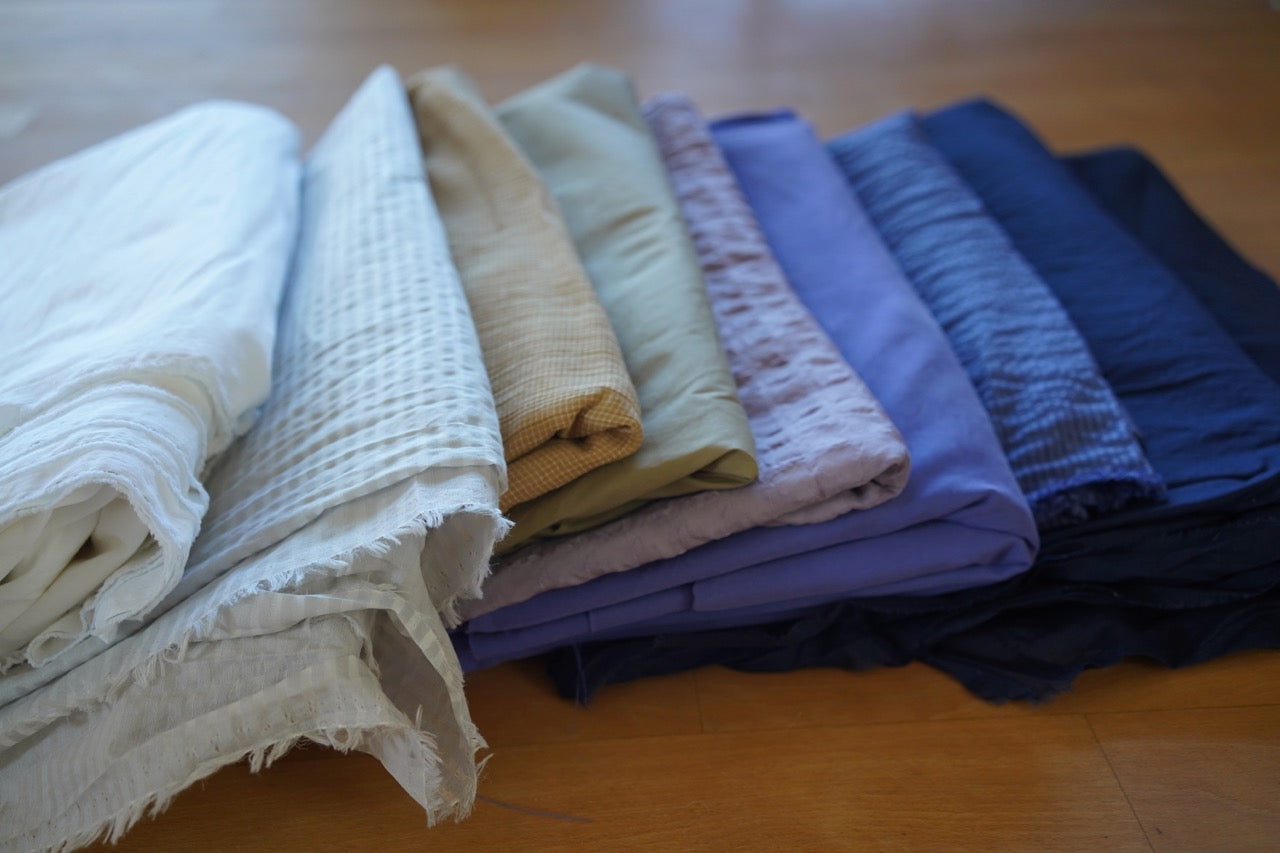Article: 4 reasons why the established fashion industry is toxic

4 reasons why the established fashion industry is toxic
I can’t count how many times I’ve walked into a store, with the intention to buy new clothes to make me feel good about myself, only to have the complete opposite happen to me. I almost break out into a panic sweat just now, writing this, thinking back to bright mirrors, showing my body from every (unflattering) angle possible, pulsating music and busy shop assistants with freshly manicured nails running around the store.
The disappointment. The horror. The feeling of being wrong, ugly, undesirable.
Why does this happen? Well, there is no singular answer to this, but I will do my best to explain everything that is wrong with how the fashion industry currently operates, in my view of course.
1. The fashion industry sells us things we don't need
Every now and then, people need new clothes. Since we as humans shedded our fur back in Africa some hundred thousands years ago, people have had a need to wear clothes for protection against nature's elements. To keep us warm during snowstorms and to protect us from an unforgiving sun in the desert. Clothes definitely have a purpose!
However, at some point in time, clothes began to have not only a material function but to also show our status in society in relation to each other. The most expensive cloths and colors were fashioned into clothes for society’s elite members, such that everyone else could see how awesome they were.
After the industrial revolution, and especially after the second world war, it became a lot cheaper to make garments on industrial scale. Society as a whole grew richer, social mobility became a thing, and the process of sewing clothes, which used to be a laboursome task within the household, was exported to factories with the capacity for mass production. The price of clothing dropped dramatically which meant that people could afford to own more pieces of clothing.
To keep this business model alive though, fashion companies had to keep convincing people that they needed to buy new clothes all the time. The easiest way to do this is to prey on people's vanity and insecurity and utilize the ancient fact that not only do clothes have a specific function, clothes are also a medium that communicate one’s status in society. So in essence, if you want other people to think you are cool, you can simply buy your way to approval. But this leaves the open question. How do we define what is cool and fashionable?
This is where I must give the big high-end, luxury fashion companies some credit, because they are absolute masters of what they do. They increase the price of their clothing, which makes it less affordable for the masses but even more desirable because it is exclusive. The wearer of this exclusive piece is then cooler than you, because you don’t own the same thing, hence, if you want to be cool like them, you must buy this piece too! Then what happens? Suddenly too many other people start wearing the cool item diluting its exclusiveness making it not so cool anymore. Now this is the true genius of the fashion industry model. Because at that exact moment, when the item from the previous collection is no longer considered to be exclusive or desirable enough anymore, the fashion companies push out a new collection, re-starting this process, urging people to buy new things again, even though the clothes from the previous collection have hardly been worn at all.
So, if you sometimes feel your clothes are too old or too unfashionable, it’s probably because the fashion industry has succeeded in convincing you of this false truth.
2. The fashion industry wants you to feel inadequate at any point in time
Now, in the above section I explained how the fashion industry business model works in brief terms, but there is actually another, more subtle, strategy that most fashion companies use in order to sell us new clothes.
It is my belief that most fashion companies deliberately want us to feel bad about ourselves. Why? Well, in order to sell us a cure for this feeling of inadequateness, that they have created. By dressing (mostly) young, tall, symmetrical looking models in their clothing and then splashing every empty page in any women's magazine with beautiful imagery, they create the illusion that if you don’t look like this or own these items you somehow live an average and very undesirable life.
It works like this. In a hypothetical world, imagine I go to a routine checkup at my doctor's office. There is absolutely nothing medically wrong with me, but even so the doctor convinces me there is (because she is getting paid by a pharmaceutical company to push out some new medicine they invented for a new disease that doesn’t really exist). This is a genius strategy, because if I can be convinced something is wrong with me then I can be convinced I need to buy a cure.
You don’t look good enough, fancy enough, fresh enough? Do you want to get the same level of admiration like our beautiful model here? - then buy our new range of clothing that will make you shine like a star (but only for one season though).
3. The fashion industry designs clothes for one specific body type only
Back to the shining mirrors, the pulsating music and the busy shop assistants. Why do I look in the mirror and feel something is wrong with me? I have tried on the clothes in different sizes, but in any given size something is still off. Either the jeans fit around my hips/thighs but are too loose around the waist, or they fit the waist but not the hips. Sounds familiar? Then you, like me, have a non-standard body type.
Most fashion companies use a standard body type, the “ideal”, to design clothes for. This simply means that the companies decide on a set of rules for how they imagine their consumer looks like in a given size. The measurements of the body, typically that of the bust, waist and hips grows at the same rate proportional to each other for bigger sizes, or shrinks in the same relative rate for smaller sizes. What this means is that the body type, typically the “ideal” body type, is largely the same for any size.
But the reality is that lots of women don’t have an “ideal” body type, so the clothes they try on don't always have a great fit which can’t be fixed by changing the size alone. Because in the example with the jeans - if I choose the jeans based on my hip measurement alone, they usually do not fit around the waist, because the relative ratio between my waist and hip measurement is proportionally bigger than that of the “ideal” body type.
I can’t tell you how many times I have come home with new clothes in a bag that didn’t have a great fit, only to hope that one day they magically would, because my body would change. But it has, unsurprisingly, never happened.
4. The fashion industry has a huge negative environmental impact
Okay, this fourth and last reason is probably the most important reason why I think it's time we as consumers change our relationship with clothes. Because producing clothes is really bad for the environment.
Many reports, for instance this from the European Parliament, says clothes are estimated to account for 10% of annual global carbon emissions. But I also read other reports that say, that nobody actually knows what the true impact is - it might be even higher! To me that is actually the biggest problem with the fashion industry. It is impossible to know exactly what the true cost of clothing is. And by cost I don't refer to the retail price but to the hidden cost of clothes that correspond to the amount of ressources that went into producing them (raw materials, water, chemicals, exploitation of labour, transportation, pollution etc.)
In my opinon, not even the "sustainable" fashion brands, or brands making "sustainable" collections, can be trusted. The word "sustainable" is so diluted it can practically mean anything. I would also be weary of saying it is even possible to label a man-made product sustainable, because there will always be a cost associated with producing something that didn't already exist.
It was a true eye-opener for me the first time I heard someone say, that the most sustainable piece of clothing you can wear... is the one you already own. Not organic cotton, not locally sewn, not fair-trade produced, not tencel, linen or recycled polyester. Just plain old clothes. Hah! I hadn't seen it coming.
Now you might think I will postulate that making your own clothes is the only way to get a sustainable wardrobe. Well, it is tempting since I am living off of selling sewing patterns for women's wear. But I will not say it - simply because I don't know if it is better or not. It might be, since when you make your own clothes you take full control over the production process, from selecting the materials to applying your own labour in the sewing process. But most of the fabrics you can buy in a fabric shop are not so different from the fabrics used by the fashion industry, which means that they are equally polluting etc. But you can make a concious choice by buying good quality from the beginning, treating your me-made clothes well and make them last longer.
What I will say, though, is that sewing my own clothes have made me appreciate both my body and my clothes more. Sewing is slow-paced and laboursome but it pays off in the end. It is the best feeling to wear something you made, that fits you well, that you are proud of, and to have people say "oh I love your dress - where did you buy it?", and then you say "I made it myself!". To see the surpise and amazement on peoples' faces.
There is nothing better.
If you made it to the end - congratulations! Let me know what you think. Am I being to harsh or have I left something out? Please comment below.


1 comment
Ayesha’s Collection,
It’s a powerful and deeply relatable insight into the emotional impact of modern retail experiences. The sensory overload and often harsh reflections in fitting rooms can indeed turn shopping—a supposed act of self-care—into an uncomfortable ordeal. This blog captures the tension between fashion’s evolving role from practical necessity to a tool of status and self-perception. It highlights a critical need for change in how the fashion industry operates, encouraging a more mindful and positive shopping experience that respects both our well-being and our need for authentic self-expression.
Ayesha's Collection
Leave a comment
This site is protected by hCaptcha and the hCaptcha Privacy Policy and Terms of Service apply.